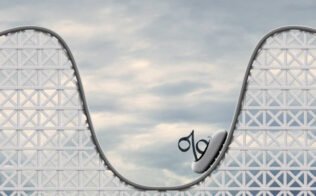umerous investors seek to purchase and sell equities by themselves online rather than paying huge royalties to brokers to conduct transactions due to the spread of digital technology and the internet. The purchase or sell option appears straightforward when executing a trading order in the stock market. And even though it seems feasible to execute the trade in this manner, it is wasteful since it necessitates regular stock surveillance and increases the chances of capital loss. Thus, by using diverse stock market order functions, you can mitigate loss and save time for yourself.
Slippage could be the difference between winning and sacrificing profits when investing in highly volatile equities or a fast-moving marketplace. By enrolling in The Thought Tree Institute’s Stock Market Course, you may gain the technical skills needed to become an experienced investor. Please remember that several types of order in stock market might be employed depending on your investing or trading needs. Before you can even begin trading stocks, you must first comprehend the various types of order in stock market and when each one is relevant.
Types of Order in Stock Market
1. Market Order
A market order is a stock trading order that allows you to buy or sell a stock at the current market rate. The fact that the market decides the asset’s value means that the person does not have control over the money paid for the stock purchase or sale. In a fast-moving marketplace, a market order has a significant chance of overrun. If a share is widely traded, other trade orders might well be processed before yours, causing the amount you pay to fluctuate rapidly.
Example: If an investor placed an order for 100 units, they would receive 100 shares at the stock’s current purchase price.
Read More: What is Sensex?
2. Limit Order
The limit order is a purchase or sale command for stock at a predetermined price or superior. A limit order protects traders from trading stocks at a price they don’t wish to pay. As a result, a limit order would not be executed if the current value does not match the limit order value. As a result, a limit order can be described as a buy or sell order with boundary limitations imposed on the asset’s buying or selling price.
Example: A Buy Limit Order specifies a price limit of $10 per share, where $10 is the terms of the price order issued by the buyer for purchasing, and the deal will only be conducted if the price is less than $10.
Simultaneously, an investor uses a Sell Limit Order to sell 100 shares at $11 per share. The deal will be performed only if the stock price reaches $11 or greater in this situation.
3. Day Order
If you don’t provide an expiration date using the GTC command while placing an order, it will default to a day order. This signifies that the order will expire at the end of the trading day, whether it is a market order or a limit order. You will have to re-enter your order information on the next trading day if it is not processed on the stipulated day.
4. Stop-Loss Order
A stop order is another name for a stop-loss order. It is a type of trade order used to restrict (and so safeguard) an investor’s losses on a given investment. When a stock hits a specified price, a stop-loss order sells it. A stop order is most commonly linked with long-term investors, although it may also be utilized with short-term securities. If the stock moves over the stop-loss order price, the stock will be acquired. This is one of the most popular types of order in Stock Market.
Example: An investor may intend to sell his shares only if it falls below $8 from their present price of $10. The investor might place a stop-loss order of $8 so that when the share price reaches $8, the transaction is converted to a market order, and the stocks are sold at the best available price.
It’s worth noting that the share may not sell for precisely $8, depending on supply and demand, but may be sold for less than the stop-loss order price. If you don’t have time to constantly monitor the market but still need to protect yourself from a major downward move, you should consider utilizing the Stop-Loss Order. Like at times when you will be offline or out for vacation.
5. Stop-Limit Order
A stock-limit order integrates the attributes of a stop loss and a limit order into one conditioned trading order. A stop-limit order necessitates the entry of two prices, namely, a stop value and a limit value. The transaction becomes a limit order once the stock reaches the stop value. As we’ve seen, a stop-loss order ensures that an order is executed, but not always at a price specified in the stop order. In contrast to a stop-loss order, a stop-limit order ensures a price cap on buying or selling as specified by the customer.
Example: If a stock trades at $10, the owner would prefer to sell it if it falls below $8, but only if the share can be sold for $7 or more. The investor places a stop-limit order with an $8 stop price and a $7 limit price. When the stock falls below $8, the transaction becomes a $7 limit order, which will only be exercised if the price is higher than $7.
Read More: What Is Nifty?
6. Trailing Stop Order
The trailing stop order is comparable to a stop-loss order in that it follows the market’s movement. A trailing stop order, on the other hand, is predicated on the percentage fluctuation of the market price rather than a particular price target. Even though a trailing stop order is most commonly linked with long-term investments, it may also be used for short-term investments. If the stock swings by a certain amount, it will be bought or sold in this situation.
Example: For $10, a trader purchases 100 stocks of a company. The investor places a 20% trailing stop sell order while purchasing. The order will be executed, and the asset will be sold at the best market price available if the price crashes by 20% or more.
7. Cover Order
A market and stop-loss order are combined to form a cover order. This implies that any buy or sell order anyone places will always be a market order with an addition of a Stop-Loss Trigger Price (STLP) as well as a limit value. As a result, your market vulnerability is immediately reduced. Therefore, the Cover Order can be established as a Market Order, Limit Order, or Stop Loss Order, all on the same page. Keep in mind that the SLTP must fall between predetermined limits based on the securities and your broker due to the leverage provided by Cover Order. You can benefit from a cover order by minimizing your risk and guaranteeing that your losses are minimized.
8. Margin Intraday Square Off (MIS) Order
As the name implies, this is an intraday transaction, and each MIS order must be completed within a single trading day. This provides you the opportunity to profit from market swings throughout the day. And if you don’t close the trade by 3:00 PM, it will be squared off or stopped automatically.
Because each deal is squared off in a single day, you may receive more leverage to purchase higher volumes. In the world of finance, leverage refers to the amount of capital you may borrow to make a deal. You invest a portion of the amount you’re trading in such orders. The broker and returns pay the remaining balance, but you shall receive any benefits or deemed to repay the losses upon closure of the MIS Order.
Read More: How to Predict the Stock Market?
9. Bracket Order (BO)
Bracket Orders allow investors to fully automate a specific buy or sell of an asset by allowing numerous orders to be submitted at the same time. It generally consists of three elements, each of which makes it possible to create a buy or sell order and specify its target price and stop-loss function. This culminates in a completely covered order being placed on the marketplace, allowing you to book gains and cover losses instantly. The only restriction is that Bracket Orders are usually only available for a single day and may not be available for extended periods of time. The availability of leveraging on these transactions is an advantage. Hence this is another important type of order in stock market.
10. All or None (AON) Order
This is particularly essential for people who acquire tiny stocks in huge quantities. If you place an all-or-none order, you’ll get either the whole quantity of assets you requested or none. This is often beneficial when a stock has limited liquidity (small volumes available for trading) or when orders are subject to a limit.
Example: An all-or-none limitation implies that if you place an order for 2,000 shares of XYZ but only 1,000 are being sold, your order will not be honored until at least 2,000 shares are available for purchase at the stock market. Your 2,000-share order would be partially completed only if you didn’t specify any all-or-none order limitation.
11. Immediate or Cancel (IOC) Order
An IOC Order requires that the accessible quantity out of an order that may be traded at the marketplace be executed in a specific time frame. The market’s available stocks at that value will be acquired, and the balance of the transaction will be canceled. If no stocks are exchanged in that time frame (often a few seconds), the order is canceled. The IOC Order is commonly used to buy extremely volatile equities.
Read More: How to Become a Successful Trader?
12. Fill or Kill (FOK) Order
This order type clubs the AON Order with IOC conditions; in other words, it requires the full order size (demanded volume) to be transferred in a very short period, usually a few seconds or less. The order is canceled if neither requirement is satisfied at the marketplace at that particular time point.
Closing Words
It is important that you understand different types of stock market orders so that you can take advantage of the market. Choosing the correct order type in the stock market might also help you optimize your earnings. As a result, by understanding what each order accomplishes and how it may affect your operations, you can determine which order best meets your investing goals, save time, decrease risk, and, most significantly, protect your investment from unintended losses.
The above Stock Market Trade Order classification encompasses all of the key varieties that can be used for short and long-term investments, intraday trading, leverage trading, and a variety of other purposes. However, because the stock market is so broad and contains so many different order types that may be utilized together, you can learn further about trade orders, stock trading/investment, and technical analysis by joining us at The Thought Tree. We provide the best stock market course in Jaipur.
Recent blog
Course
- Unlocking the Mysteries of Bull Markets: A Comprehensive Guide
- Understanding Blue Chip Stocks: Definition, Examples, and Investment Strategies
- Understanding Volatility: What Is Volatility in the Stock Market?
- What is SEBI: Role, Structure, and Powers
- Understanding Bear Market: Types, Causes, and Consequences





